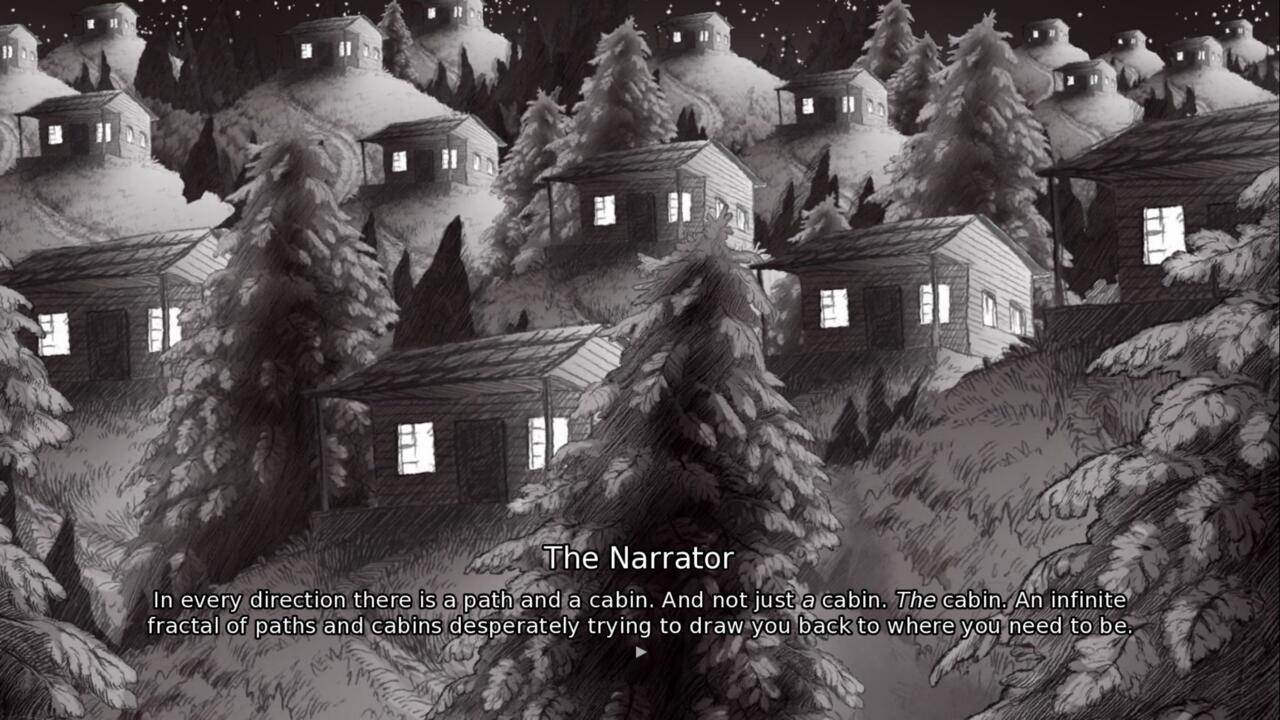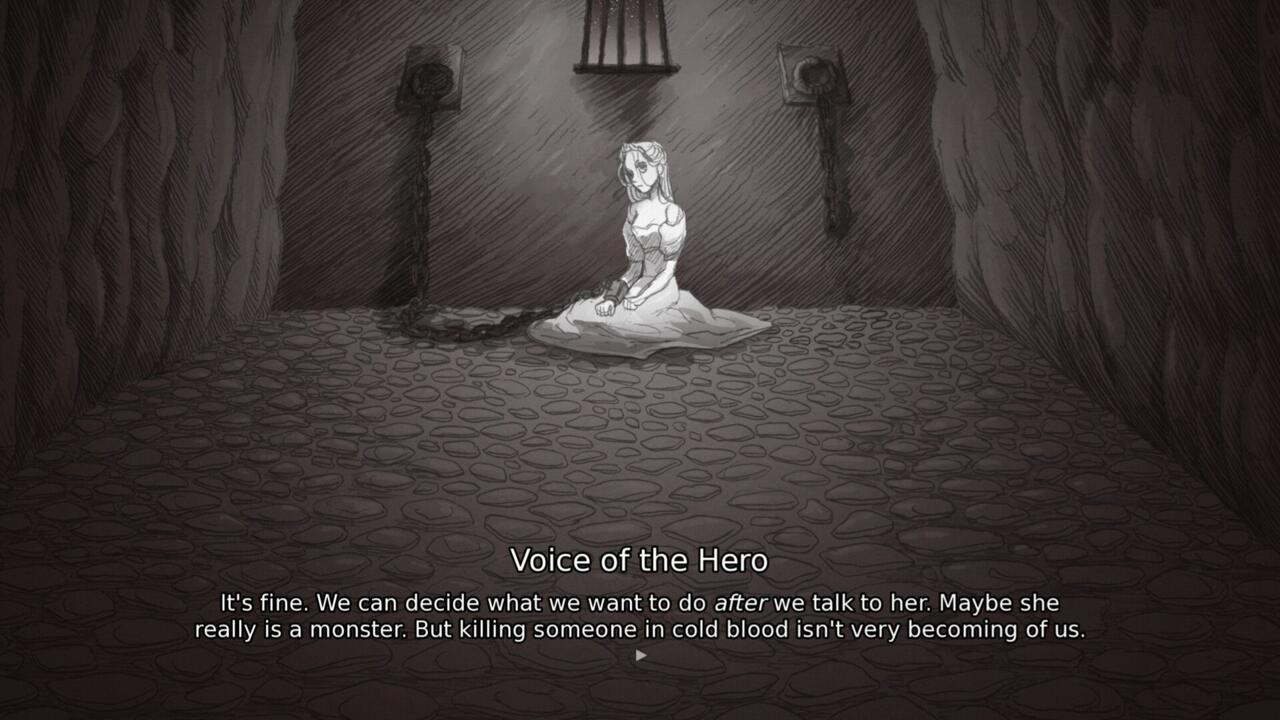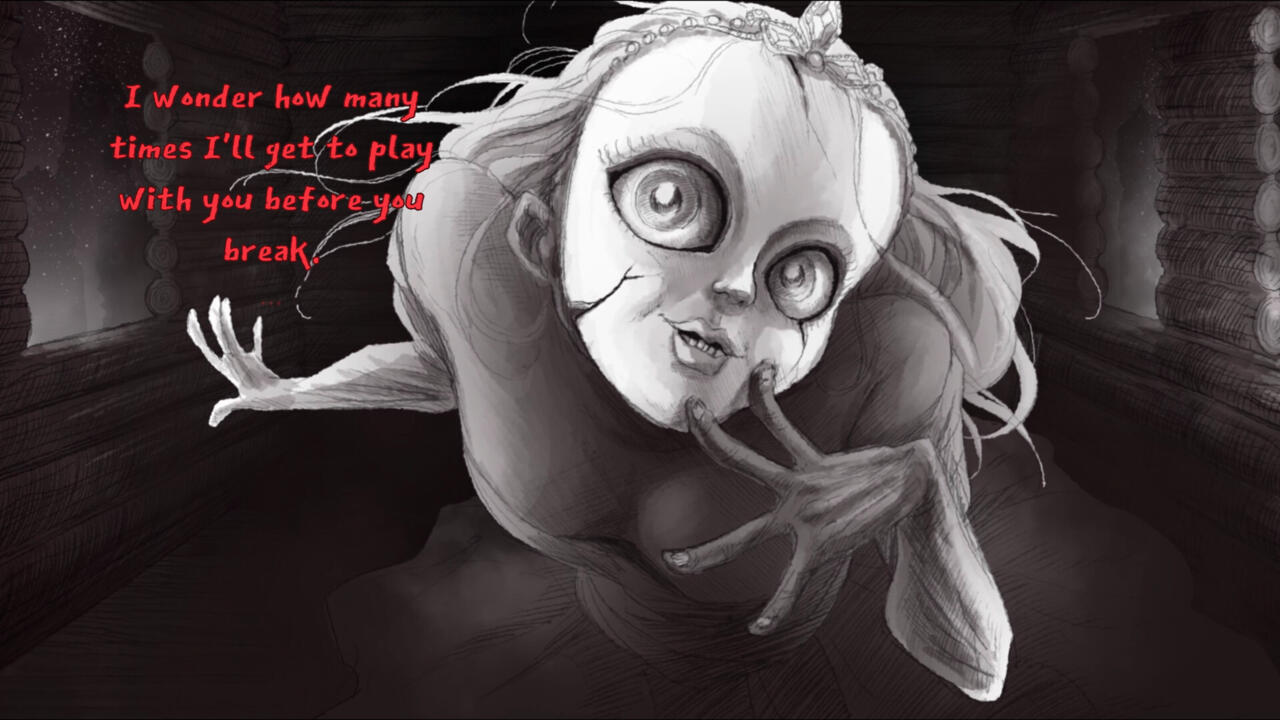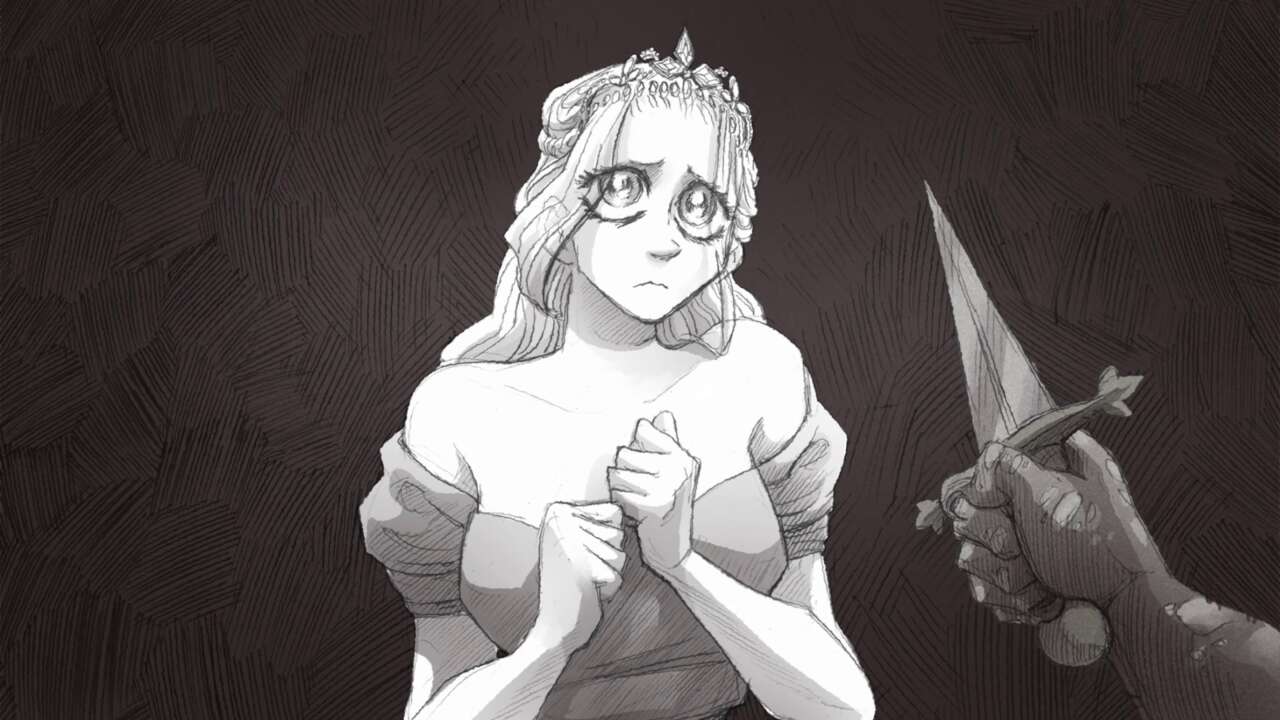Heart. Lungs. Liver. Nerves. As The Nightmare neared, her face covered in chipped porcelain and her presence like shrill static, these four words became a chant. The Paranoid–one of the many personas inhabiting the hero’s too-full head–was the one uttering it, a reminder to the other voices in this malformed vessel that it was now up to them to perform what were once autonomous functions. Heart. Lungs. Liver. Nerves. The words were a pulse; the singular thread tethering this body to this plane of existence. But as The Nightmare grew closer, the desperate thrumming faded to silence. And then, the thin thread snapped.
In Slay the Princess, however, death is only the beginning: the start of a time loop that nearly always resolves in mutually-assured destruction. But despite the horrors you endure and the promise of death–repeatedly and oftentimes brutally–the game begins with a small, strange note: This is a love story. And as a love story, a horrific visual novel, and a work of narrative-driven psychological fiction, Slay the Princess is remarkable. The Pristine Cut further polishes this gem of a game, adding more depth and replayability to an already-brilliant title that is abundant with introspection, poetic (and often humorous) writing, stellar voice acting, and memorable art and music. Though there are still a few rough spots–namely some of its audio mixing and its UX design on consoles–Slay the Princess is a beautiful experience, brimming with emotion and cleverness.
The premise is simple enough and explained by both its name and its exposition: “You’re on a path in the woods, and at the end of that path, is a cabin. And in the basement of that cabin is a princess. You’re here to slay her.” Naturally, this raises a lot of questions: Why does she need to die? Why am I the one killing her? What is the motive of the person instructing you to do this? As the protagonist’s primary, guiding voice, it is up to you to explore the dozen or so prompts that emerge as each new piece of information is brought to light. Your every response and action–or lack thereof–determines and alters the path laid before the hero, as well as the many other voices that join you in guiding him as successive loops unfold.
If you’re the type to ask a lot of questions or second-guess yourself, The Paranoid or Skeptic might emerge, altering the choices you have and your own perception of what is happening. On the other hand, a self-assured approach might give way to the voice of The Stubborn or perhaps even The Smitten. As your personality, role, and beliefs are solidified, the form of the damsel tucked away in the basement is altered, as well. All of these factors compile and build across a handful of acts, culminating in the end of one story and the progression of a deeper narrative lurking just below the surface.
This process of choosing new paths, watching abandoned ones crumble away, and stumbling into variants of the places, voices, and parties involved is fascinating. The breadth of the branching narrative is incredibly impressive, as you explore seemingly endless situations and events that range anywhere from surreal and horrific to heartbreaking and tender. I was also consistently impressed by how the game’s responses seemed to perfectly predict my own, giving voice to nearly every ethically-motivated, practical, inquiring, or cheeky remark that resided in my own head. The Pristine Cut only adds to all these feats, giving players a slew of new scenarios and endings that add even more replayability and depth.

Outside of this fascinating premise, however, much of what makes Slay the Princess so mesmerizing boils down to two things: stupendous writing and impressive performances by two voice actors with frankly incredible capabilities and range.
Lead writer Tony Howard-Arias and Abby Howard, the game’s lead artist and assistant writer, work together to create a work that is vivid, poetic, clever, introspective, and, perhaps most shockingly, incredibly funny. The voices in your head are great at adding levity to dark situations (The Cheated, in particular, brings an annoyed angst that is always good for a laugh), while multiple other scenarios lead to absurd and funny resolutions that are further elevated by the game’s art, which dramatically changes based on the writing’s overall tone.
But in the moments where tenderness is placed front and center, or moments of deep introspection, Howard-Arias proves himself extremely capable of moving the reader and finding ways to turn a surreal experience into something relatable and reflective. It’s difficult to broach some of these moments, as they are best left for players to discover, and I’ve already revealed arguably more than I’d want any new player to know about the game, but there are a lot of parts of the game–especially in its larger narrative–that moved me.
Another duo that brings a lot to the game are voice actors Jonathan Sims and Nichole Goodnight, who–while only technically voicing a total of three independent characters–create upwards of a dozen different voices for them. Regardless of if Sims is voicing the more straight-laced yet exasperated Narrator, or any of the hero’s several personas, he delivers a consistently fantastic performance. He is able to perfectly capture the emotion behind the fast-talking, curse-slinging The Cheated, the Robert Smith-esque The Cold, and the boisterous, lovestruck The Smitten, making it feel as if a whole ensemble has come together to guide the hero. Similarly, Goodnight is able to bring terror, devotion, pain, ferociousness, disgust, animosity, and utter detachment to The Princess, creating a damsel you can’t help but develop complicated feelings for.

I would also be remiss to not bring up the game’s Foley effects, as well. Slay the Princess wouldn’t work nearly as well without the gut-wrenching sounds of ripping flesh, the cracking of bones, the rattle of draped chains and butcher’s hooks, and much, much more.
The game’s music–and the strategic use of cutting it to intensify a few, select scenarios–also serve to create atmosphere and environment; I’m not exaggerating when I say that each track is fantastic. The delicate piano of “The Princess” is haunting yet heartfelt and serves as a repeated motif throughout the game, such as in one of The Pristine Cut’s new tracks, “Rhythm of the Flesh,” which leans hard into an intense horror sound. “The Apotheosis” is another standout track, with its operatic backing vocals and an almost industrial sound. “A Kiss From a Thorn” tugs at the heartstrings, causing emotions to swell as The Narrator reluctantly describes the ensuing scenario: “If history itself were not about to end, historians would document this moment for the rest of time. Musicians would write era-defining ballads, and great artists would expend entire lifetimes trying to merely capture the spark you hold right now.”
The game’s art is another impressive feat, as it is all gorgeous, ever-shifting, and entirely hand-drawn. It’s almost unfinished, frenetic quality, and the fact that it is entirely in greyscale, works extremely well within the context of the game, as it reflects and amplifies The Hero’s overall psyche and allows for Howard to do some create more experimental works that might not translate as well if converted into traditional graphics.

But while this decision works, there are a few others that feel a bit reflective of limited resources that could use some slight improvements. Though Goodnight does a fantastic job voicing The Princess, at times the audio mixing felt a bit off, with her more booming lines sounding a bit blown out while others feel almost layered atop the rest of the game rather than mixed in. Additionally, the UX could use a bit of work on console. When I first played Slay the Princess on PC, I had zero qualms with the user interface. However, in playing The Pristine Cut on PS5, I realized the experience doesn’t translate quite as well. It was a bit hard to keep track of what I was currently hovering over and wading through the game’s countless dialogue options was overwhelming at times.
As a whole, however, Slay the Princess is a dazzling game, dripping with charm, brilliance, and emotion. Last year, GameSpot included the title on its Best PC Games of 2024 list. A year later, both time and The Pristine Cut have intensified my love for the title. Though there are a few rough spots, Slay the Princess is not only impressive as a game hailing from a small, independent studio, but as a game, period. There are a substantial amount of content warnings surrounding the game–all of which can be found on its official website–but for those willing to endure, it is a must-play.
